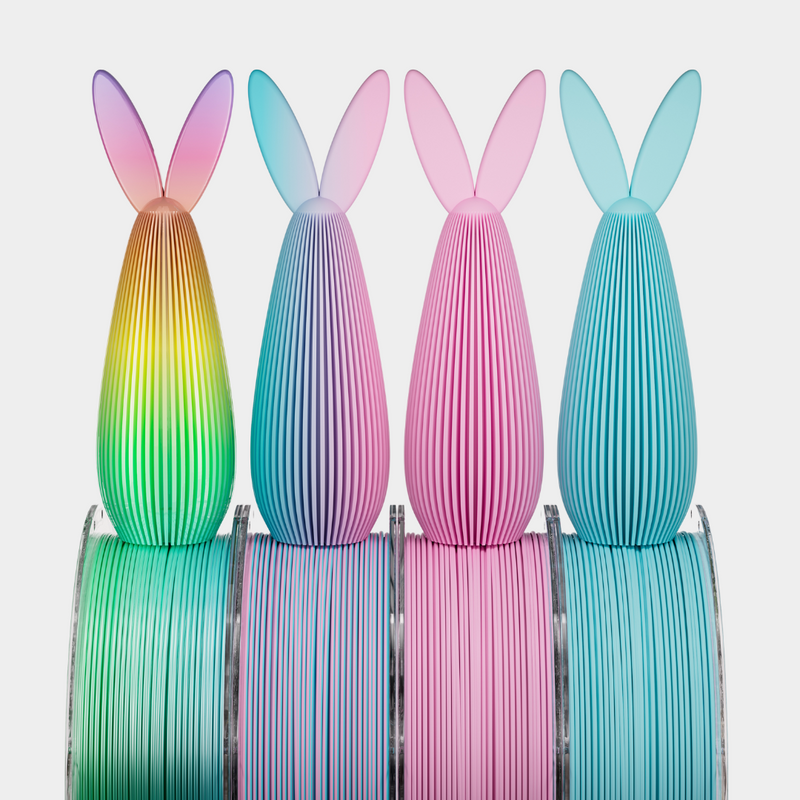Unlock the Secrets of 3D Printer Filaments: Discover the Perfect Material for Your Next Project!
3D printing has revolutionized the way we create and manufacture objects, offering unmatched flexibility and creativity. However, the success of any 3D printing project hinges significantly on selecting the right filament material. With a vast array of 3D printer filament types available, each possessing unique properties, understanding these options is crucial for achieving the desired results. Whether you're a hobbyist, an engineer, or an artist, the filament you choose can dramatically influence the functionality, aesthetics, and durability of your printed items. In this article, we will explore the different types of 3D printer filaments, their characteristics, and how to choose the perfect material for your next project.

Overview of 3D Printer Filament Types
3D printer filaments are the building materials that fuel the 3D printing process. These thermoplastic materials are heated and extruded layer by layer to create three-dimensional objects. The properties of the filament, such as strength, flexibility, and temperature resistance, play a vital role in determining the suitability of a filament for specific applications. For instance, some filaments are ideal for prototypes due to their ease of use, while others are better suited for functional parts that require durability. Understanding the various filament types and their properties will help you make informed decisions tailored to your specific project requirements.
Common Types of 3D Printer Filaments
Among the myriad of 3D printer filaments available, some types stand out as the most commonly used due to their unique properties and versatility. Each filament type has its own set of advantages and applications, making them suitable for different projects. Below we will delve into the most popular filament types, starting with PLA, which is often recommended for beginners due to its user-friendly characteristics.
PLA (Polylactic Acid)
PLA is one of the most popular 3D printing filaments, primarily because it is easy to use and environmentally friendly. Made from renewable resources like cornstarch or sugarcane, PLA is biodegradable and emits a pleasant, sweet odor when printed. Its low printing temperature simplifies the process, making it an excellent choice for beginners. PLA is perfect for creating detailed prints, prototypes, and decorative items. However, it may not be suitable for functional parts that require high heat resistance or durability, as it can become brittle over time.
ABS (Acrylonitrile Butadiene Styrene)
ABS is renowned for its strength and durability, making it a favorite among professionals and hobbyists alike. This filament is often used for functional parts, toys, and automotive applications due to its high impact resistance. However, ABS can be tricky to work with, as it emits fumes during printing and may warp if not printed with a heated bed. My friend once attempted to print a complex model using ABS without proper ventilation, and the experience taught him the importance of a well-ventilated workspace. Despite its challenges, ABS remains a top choice for projects requiring robust and resilient parts.
PETG (Polyethylene Terephthalate Glycol)
PETG strikes a balance between the ease of use of PLA and the durability of ABS. It is known for its strength, flexibility, and resistance to moisture, making it suitable for both functional and aesthetic prints. PETG is often used in applications where parts need to withstand impact and stress. I remember a project where a friend used PETG to create a custom water bottle; the resulting print was not only functional but also had a beautiful finish. With its excellent layer adhesion and minimal warping, PETG has become a popular choice for many 3D printing enthusiasts.
TPU (Thermoplastic Polyurethane)
TPU is a flexible and elastic filament that is perfect for creating parts that require bending and stretching. It is widely used in applications like phone cases, wearables, and other functional components that need to absorb shock. TPU can be challenging to print due to its elasticity, which may cause feeding issues with some printers. However, with the right setup, it can produce impressive results. A friend of mine recently printed a pair of custom insoles using TPU, and the final product was both comfortable and durable, demonstrating the filament's unique properties.
Specialized Filaments
In addition to the commonly used filaments, there are specialized filaments that cater to specific needs and applications. These filaments often have unique properties that make them ideal for particular projects, enhancing the versatility of 3D printing. Below are some noteworthy specialized filament types that stand out for their distinct features.
Nylon
Nylon is a strong and durable filament that is perfect for producing functional parts that require flexibility and resilience. Its hygroscopic nature means it absorbs moisture from the air, so it must be stored properly to maintain its properties. Nylon is commonly used in applications such as mechanical parts, gears, and tools. A friend of mine who works in engineering has had great success using nylon for functional prototypes, highlighting its strength and reliability.
Carbon Fiber Reinforced Filament
Carbon fiber reinforced filament enhances the strength and stiffness of the base material, making it ideal for high-performance applications. This type of filament is often used in aerospace and automotive industries where lightweight and high-strength components are required. However, printing with carbon fiber can be challenging due to its abrasive nature, necessitating the use of specialized nozzles. A colleague once used carbon fiber reinforced filament to create a drone frame, resulting in a lightweight yet robust structure that performed exceptionally well.
Wood and Composite Filaments
Wood and composite filaments offer a unique aesthetic, combining the properties of traditional filaments with the look and feel of wood. These filaments are often used for artistic projects, decorative items, and functional pieces that benefit from a natural wood-like appearance. A friend of mine printed a series of wooden coasters using this type of filament, and the results were both beautiful and functional, showcasing the versatility of wood-based materials in 3D printing.
Choosing the Right Filament for Your Project
Selecting the right filament for your 3D printing project involves considering several factors. First, assess the requirements of your project, including the desired strength, flexibility, and heat resistance of the final product. Next, consider the printing characteristics of the filament, such as ease of use and potential challenges during printing. Understanding these factors will help you make an informed decision, ensuring that your final print meets your expectations and performs as intended.
Final Thoughts on 3D Printer Filaments
In conclusion, the world of 3D printer filaments is vast and diverse, with each type offering unique properties suited for different applications. Whether you choose PLA for its ease of use, ABS for its durability, or specialized filaments for specific needs, understanding the characteristics of each material is essential for achieving successful prints. As you embark on your 3D printing journey, take the time to explore the various filament options available, and consider how each material can enhance your projects. The right filament choice can significantly impact the quality and functionality of your prints, so choose wisely!








